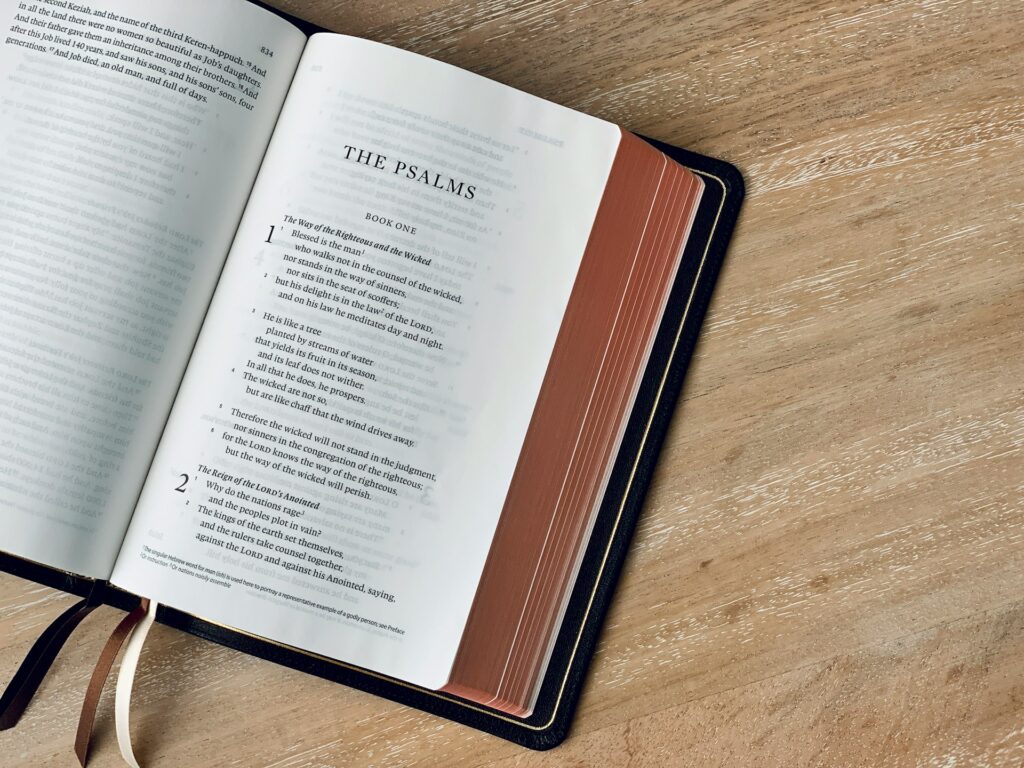The responsorial psalm is more than just a response to the first reading in the Mass, it is a meditation on the whole word of God [General Instruction of the Roman Missal 61]. When the Lectionary was revised in the 1960s, the authors chose Gospels, Old Testament readings and psalms that link together. Sometimes the Gospel directly quotes from the Old Testament, the themes are the same or the Gospel reinterprets the first reading in the light of Christ’s new promise. The psalm is our response to hearing God’s word – all of it, Old and New Testament alike. It directs our minds and prepares us to celebrate the Liturgy of the Eucharist.
The Journey of the Word

As a psalmist, read all of the readings first and try and find the links between them. Ask yourself who Christ is in the Gospel and what is he doing? Who are the other people in the story and what are they doing? In the first reading, what is God doing? Who are the other people in the story and what are they doing? Who are you? Do you empathise with Christ and what he is saying and feeling, the other people in the story (maybe they are the disciples, the people of Israel, the establishment, the evil people), or both? What’s the link between the psalm and these readings?
Does the music chosen for the psalm reflect these feelings? How can you convey this in your singing, and in the assembly’s response?
Psalms are often a conversation between the psalmist, God and “the others” – often the people of Israel or the wicked who oppose the psalmist. Is the psalm a song of praise or lamentation? Many lamentation psalms change towards the end into a song of praise for God who lifts the singer from despair to freedom.
The Liturgy of the Word is a journey, as we hear and ponder on the word of God and have it explained to us in the homily. Where were we at the start of the Liturgy of the Word – emotionally, spiritually, mentally – and where are we at the end? How do these readings focus us to move to the next part of the Mass, to celebrate the Eucharist?
Words are primary
Remember that the words are primary; music is there to support the words of the psalm. Speak the words of the psalm aloud first, even before you practice singing them. Notice which words and syllabes you stress naturally; check the pronunciation of any difficult words or names. You may identify different stressed syllables than another cantor would – that’s OK, if it helps to convey the emotions you identified. If chanting the verses of a psalm, sing just a little slower than you read to keep the poetic flow of the words. Keep the flow even and measured; don’t come to a halt just before a note changes. Watch out for commas. Instead of taking a breath, just lengthen slightly the syllable immediately before it.
Where to sing the psalm from
The psalm is usually sung from the ambo or lectern (GIRM 61) as it is the word of God, but you can also sing it from anywhere else that allows the assembly to participate effectively. Maybe there is a distance between the ambo and the musicians or organ in your church so it may help for the psalmist to stand next to the musicians to help them both keep time.
Don’t be afraid of silence

The Liturgy of the Word is a dialogue of proclamation and meditation, with silence allowing the word to settle in our minds and hearts. Give yourself time between the first reading finishing and the introduction of the psalm starting. Fifteen to twenty seconds may be ideal but you could start with a shorter pause and work upwards. To avoid distraction, you may want to move to the place you will sing the psalm when the reader moves for the first reading and return after the psalm, or after the Gospel if you are not also singing the Gospel Acclamation.
Make sure that your reader knows what you are doing, to prevent them saying the psalm just as you are about to start singing it. If you are unable to speak to them before Mass, you could put a sticky note on the ambo or in the lectionary book to advise that the psalm is to be sung.
Psalm styles
There are many styles of psalms, including chanted verses, Gelineau (pulsed tone) and psalms with melodic verses. Chanted verses use pointing – underlines or vertical bars – to show you where you change from the long reciting note to the next. If you have read through the psalm and identified the syllabes that you stress, you may disagree with the pointing in a published book if it doesn’t correspond to the syllables that you identified. Don’t be afraid to change the pointing to suit your interpretation.
Psalms with chanted verses allow you to grapple with the meaning and emotion of the text directly; a psalm with a verses in a regular metre may take that choice away from you. If you are thinking of using a psalm paraphrase, check that the words follow closely the text of the psalm in the Lectionary.
You can sing chanted psalms with a guitar accompaniment. The guitarist should strum once when the note or chord changes, not keep strumming in a pattern while you’re singing a series of syllables on one note.
Singing psalms for the first time
If you’re starting to sing the psalm in your community for the first time, there are several easy ways to start. You could sing the response and ask the reader to read out the verses. You could learn two psalm tones – one in a major key for praise psalms and one in a minor key for lamentations – and use them appropriately. The Lectionary also provides common psalms.
Common psalms are a useful but little-known resource. There are some psalms given for various seasons of the year and a larger number that can be used during any Sunday of Ordinary Time, instead of the psalm appointed for the Sunday. By repeating a common psalm for a number of consecutive weeks, your assembly can get used to singing the psalm – and so can your cantor. Make sure your priest agrees first, though, because he may be referring to the lectionary psalm in his homily!
Further reading
Living Eucharist – Fr Allen Morris’ reflections on readings. livingeucharist.wordpress.com
At your Word, Lord – Liturgy of the Word document. www.liturgyoffice.org.uk/Resources/Music/
This is part of a series of posts summarising a workshop given at the Society of St Gregory Summer School 2014
